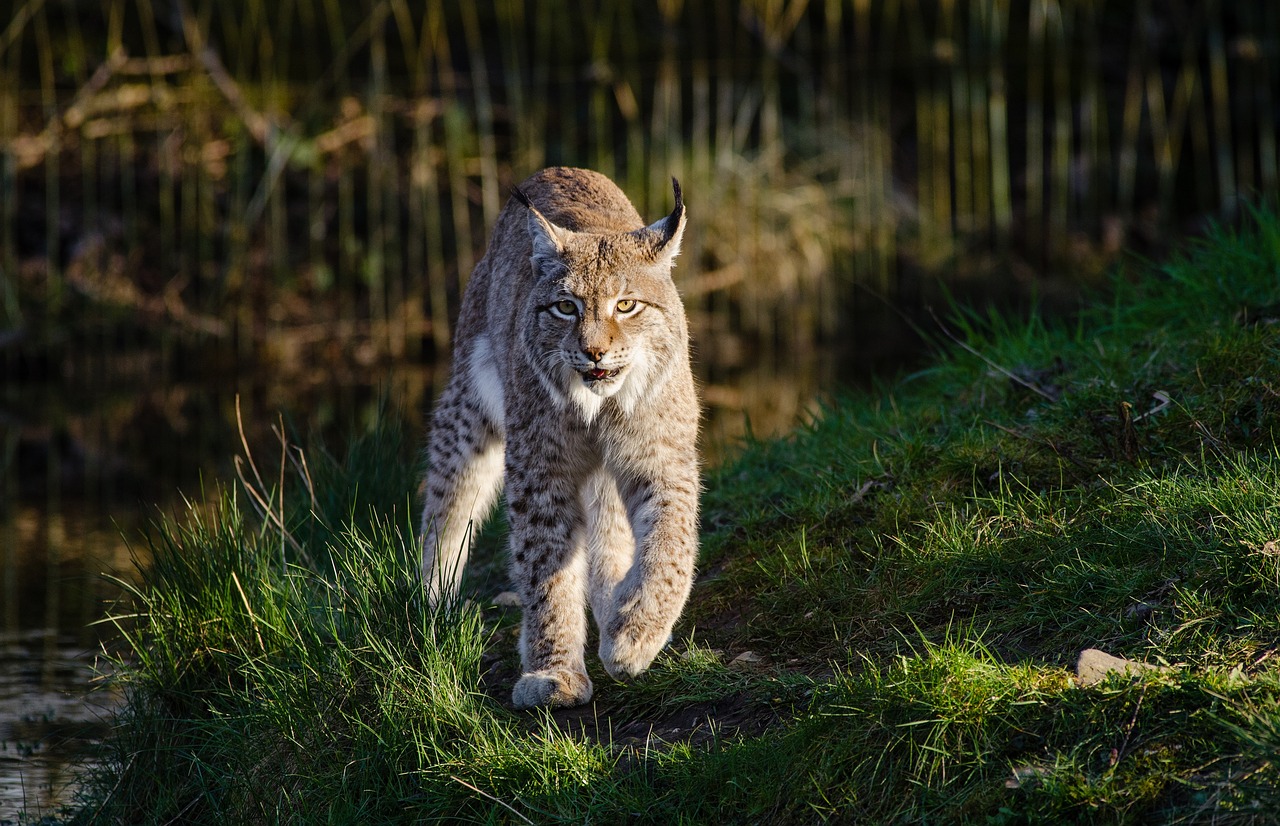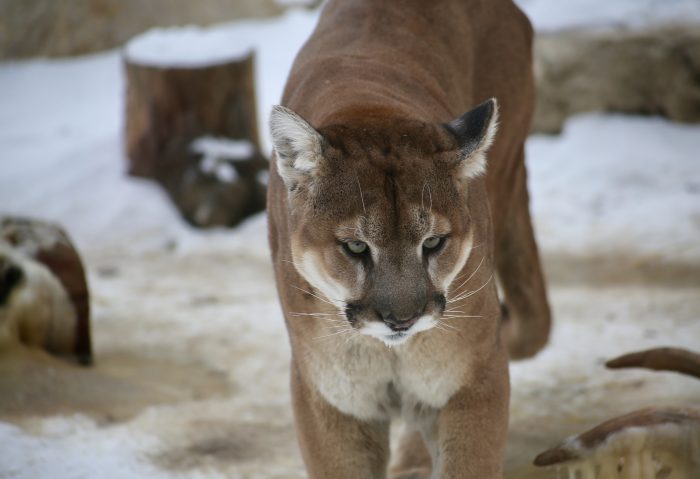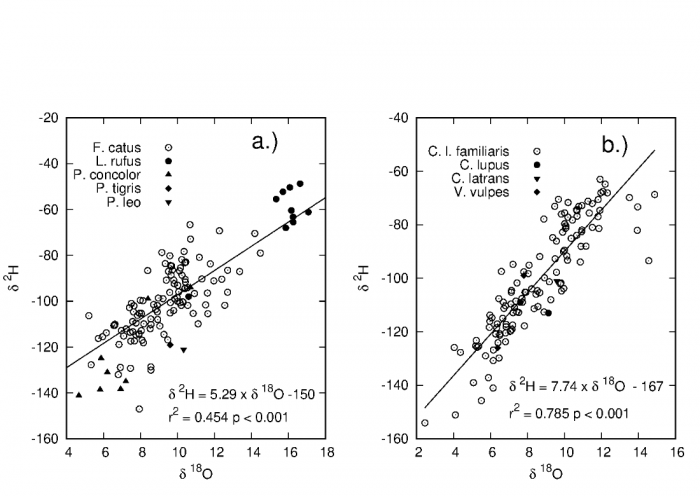
All African felids are considered either vulnerable to extinction or endangered on the IUCN (International Union for Conservation of Nature) Red List. These iconic and charismatic species face many anthropogenic threats which include predator control, loss of habitat or prey, and direct hunting for trophies or curatives. In addition, many species or their parts are also subject to the illegal wildlife trade. For such vulnerable or endangered species, the ability to link individuals to their geographic origin is an important tool for forensic or conservation purposes.
One tool that researchers can use to assign organisms to their environment are the ratios of the stable isotopes of hydrogen and oxygen in tissues. Isotopes are variants of elements that vary in the number of neutrons and, thus, mass. The relative distributions of stable-hydrogen and oxygen isotopes do not decay, but instead vary globally in environmental waters. Because H and O in animals are derived to a great extent from water, researchers can measure the stable isotope distribution of these tissues to get an idea of where animals are from. For mammals, the most common tissue used is hair or claws because these tissues are easily sampled and, once formed, are relatively inert and resistant to decay.
Obligate carnivores, such as cats, only eat meat and drink very little water, so it was generally believed their unique physiology obscures any stable isotope patterns. Dogs, on the other hand, are facultative carnivores and, like omnivores such as humans, they readily drink water, and thus a good relationship between the relative hydrogen and oxygen isotope distributions in their hair and environmental water should exist. To test this hypothesis, we measured the hydrogen and oxygen stable isotope ratios in the fur of domestic cats (Felis catus) and dogs (Canis lupus familiaris) in urban animal shelters from different places in North America, and thus, from different environmental H and O stable isotope compositions of water.
We determined that not only did the stable isotope ratios of hydrogen and oxygen of dog fur vary predictably depending where the animals were from but, surprisingly, so did those of cats. The relationship between the isotopic compositions of fur and water in cats was different than that measured in dogs and is likely a result of the obligate carnivore physiology of felids and their water-conserving nature.

Fig 1. Figure 1. One of the cougars (Puma concolor) used in our study.
To be able to apply this to wild carnivores, we also measured samples of wild and captive big cats, such as cougars (Puma concolor – Fig. 1), lions (Panthera leo), tigers (Panthera tigris), and bobcats (Lynx rufus), and wild dogs, such as foxes (Vulpes vulpes), coyotes (Canis latrans), and wolves (Canis lupus). We found that the wild cats and dogs we examined followed the same H and O isotopic trends as their domestic cousins (Figure 2).

Figure 2. Relationship between a) cat (F. catus) and b) dog (C. lupus familiaris) hair stable isotopes of hydrogen and oxygen. Also included are wild and captive bobcats, cougars, tigers, lions, coyotes, wolves, and foxes (L. rufus, P. concolor, P. tigris, P. leo, C. latrans, C. lupus, and V. vulpes).
These findings open up new avenues for conservation and forensic tracking of wild cats and dogs. This is important because many of the large mammalian carnivores are currently under threat worldwide and new methods are needed for geographic placement of these taxa and their parts.









